Who hasn’t heard that Kyoto is the most beautiful city in Japan? We can attest to that. The city which served as Japan’s capital for a millennium was by far the city we liked the most on the whole trip, due to its tranquillity and relaxed atmosphere, the quantity of things to see, its beauty and its rich cultural heritage.
It has a long list of World Heritage Sites, hundreds of temples, and sanctuaries and Zen gardens, so it will come as no surprise that we recommend spending at least three days there.
Kyoto was the capital of Japan for over a thousand years, until 1868. Founded by Emperor Kanmu, with its streets laid out in a chessboard pattern in the style of traditional Chinese cities, the city is packed with temples and shrines, reflecting a spiritual past which extends to the present day.
For more than 300 years, during the Heian Era, it was the cultural epicentre of the aristocracy, dedicated to literary production, the tea ceremony, and classical arts.
Along with Tokyo, Kyoto is one of the most visited destinations by tourists, and no one wants to miss the famous Fushimi Inari or walk through the frequently photographed bamboo forest.
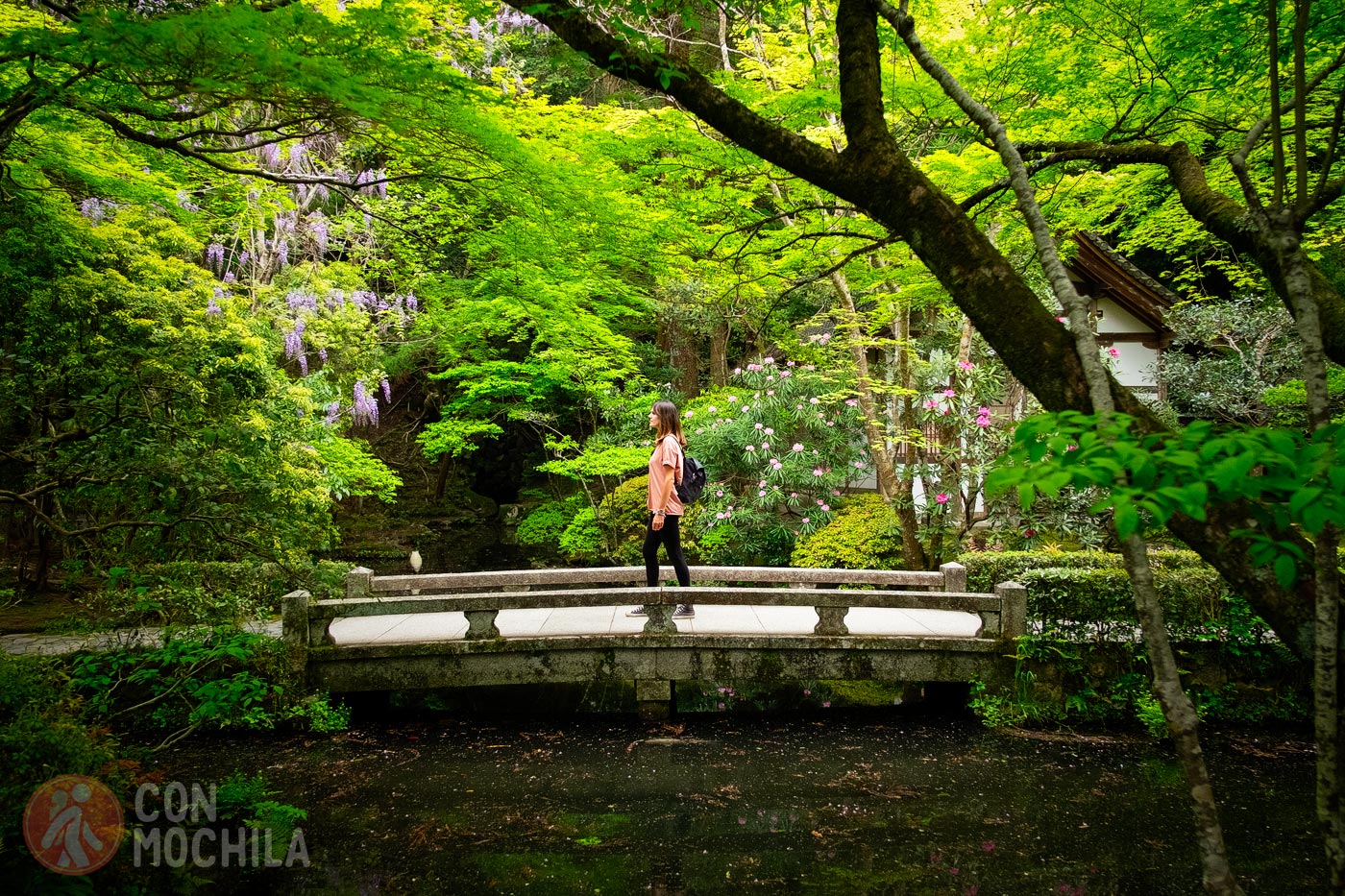
But it is also the perfect place to learn about its culture, its traditions and its varied and delicious cuisine: Kyoto is, and will always be, remembered as the place where we discovered okonomiyaki …
Kyoto is located in the Kansai region and has a subtropical climate. The city experiences four seasons and below we will tell you a little about the best time to visit.
European citizens, along with those from many other countries, do not need a visa to visit Japan for tourism purposes. You can find detailed information in the previous link regarding the requirements for obtaining the stamp that allows you to up to 90 days.
It goes without saying how important it is to travel to Thailand with a good insurance. We were the first ones to offer the famous 5% discount on IATI Insurance, but you also have it available with Heymondo Travel Insurance.
Follow the links below to get a discount on their website:
While many hotels, guesthouses, and restaurants in Japan offer free Wi-Fi, some travelers prefer or need a constant connection.
We’ve included details on obtaining a eSIM Japan card and make the most with its affordable prices. Now also with information about eSIM Japan with unlimited data.
Kyoto does not have an airport, but there are neighbouring cities that you can fly to and then reach by train. For example, Osaka-Itami Airport is approximately 15-30 minutes away, as is Kansai Airport. If you are thinking of arriving by plane, here are some links that you may find useful.
There are trains and buses in all directions to and from Kyoto, most of which stop at the central station. Remember that if you plan to travel a lot of miles by train, it may be worth getting a Japan Rail Pass.
To get to Kyoto from Tokyo you have several options, from trains (about 2 and a half hours) to buses (about 7 hours of travel) to a plane to Osaka. Tokyo station is just under 2 and a half hours by bullet train (shinkansen) to Kyoto station.
Osaka is located very close to Kyoto, just 15-30 minutes by train. The two cities are connected by regular bus lines. In this case, the time may vary depending on traffic.
Fushimi Inari-taisha is probably one of the most popular and photographed places in Kyoto. Who hasn’t seen a picture of these red gates arranged in rows and forming a long tunnel?
Many people who have seen these images may not realize that this four-kilometer-long pathway, leading to various points on Mount Inari, is dedicated to the deity of the same name. Each of these torii gates has been donated by individuals expressing gratitude for the prosperity he provides.
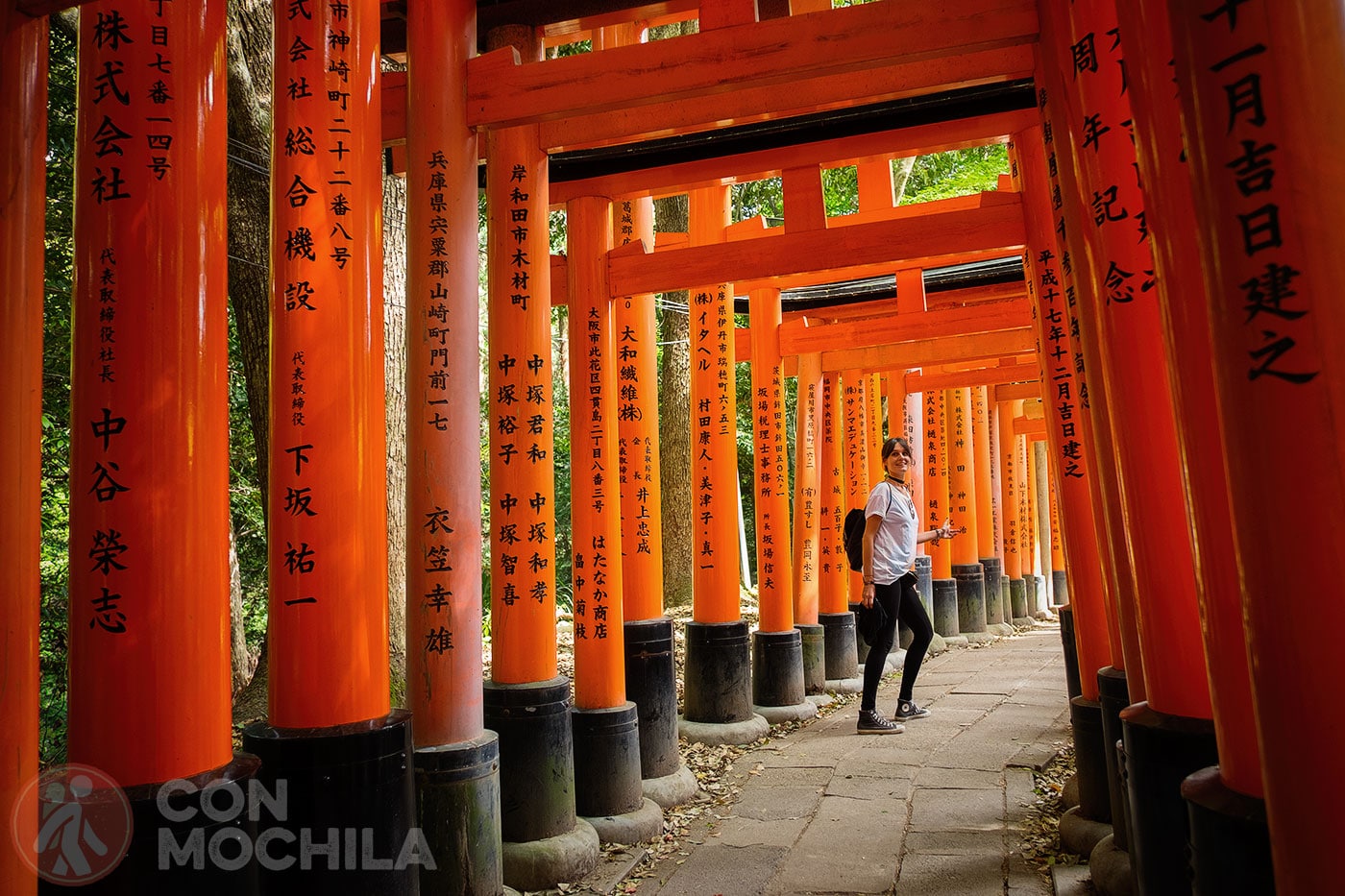
It is advisable to visit the sanctuary during a less busy season, as during periods such as spring break and rush hour it is practically impossible to get through the crowds.
Fortunately, the interior is accessible 24 hours a day. Don’t forget to wear comfortable shoes, as the climb can easily leave you with a few blisters as a souvenir.
Below is a link in case you prefer to take a guided tour of the sanctuary:
The headquarters of the Rinzai Zen school Nanzen-ji is located in Higashiyama. Although it is one of the most important Zen temples in the country, when it was built in 126 it was only a residence for the Emperor Kameyama. It has obviously had to be rebuilt several times, which is why it is still in good condition today.
The interior of this important temple is always full of believers, tourists, and often newlyweds who take advantage of the beauty of the place to take photos as a couple.
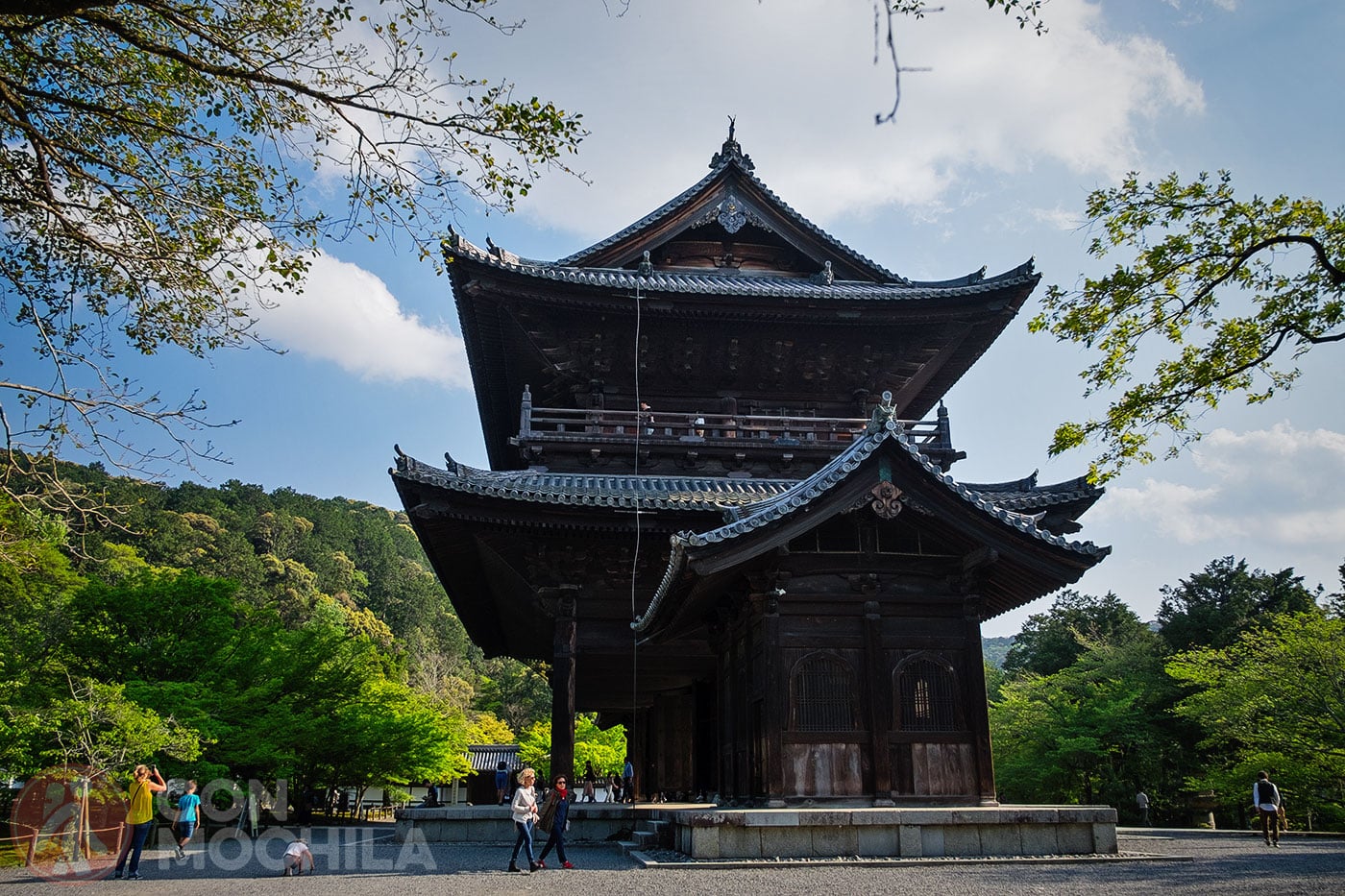
The complex is made up of several structures, including the enormous 22-meter sanmon gate and the hojo. Perhaps the most curious thing about this temple, or at least what caught our attention the most, is that it is located next to a large aqueduct that was used to bring water to the city from Lake Biwa.
North of Higashiyama is the temple Ginkaku-ji (Temple of the Silver Pavilion) or Jishō-ji, built in 1482 as a villa for Ashikaga Yoshimasa and inspired by the temple of the golden pavilion Kinkaku-ji. In this beautiful enclave of natural beauty is the Shokoku Buddhist school of the Rinzai Zen sect.
It consists of several buildings, among which the Kannonden stands out. However, what really attracts the visitors’ attention is the Ginshadan garden (sea of silver sand) with its rake marks and a mountain of sand in the center.

As you follow the path that guides the visit through the temple, you will also pass through the moss garden, a pond with several islands and bridges. Entering this temple is usually the beginning of the visit to the northern area of Higashiyama, which will continue with a tour of the Philosopher’s Walk and other points of interest.
The Philosopher’s Walk or Tetsugaku no michi is a beautiful path full of life and color, running parallel to the Shishigatani canal. The name of this picturesque place is in honor of Kitarō Nishida, a philosophy professor who used to walk along it while meditating.
Along its entire length there are several well-known temples such as Ginkaku-ji and Eikan-do and, in addition to gardens and shrines, you will find several restaurants and cafes along the promenade.
Spring is the best season to visit the Philosopher’s Walk, when the almond trees blossom and paint the landscape pink.
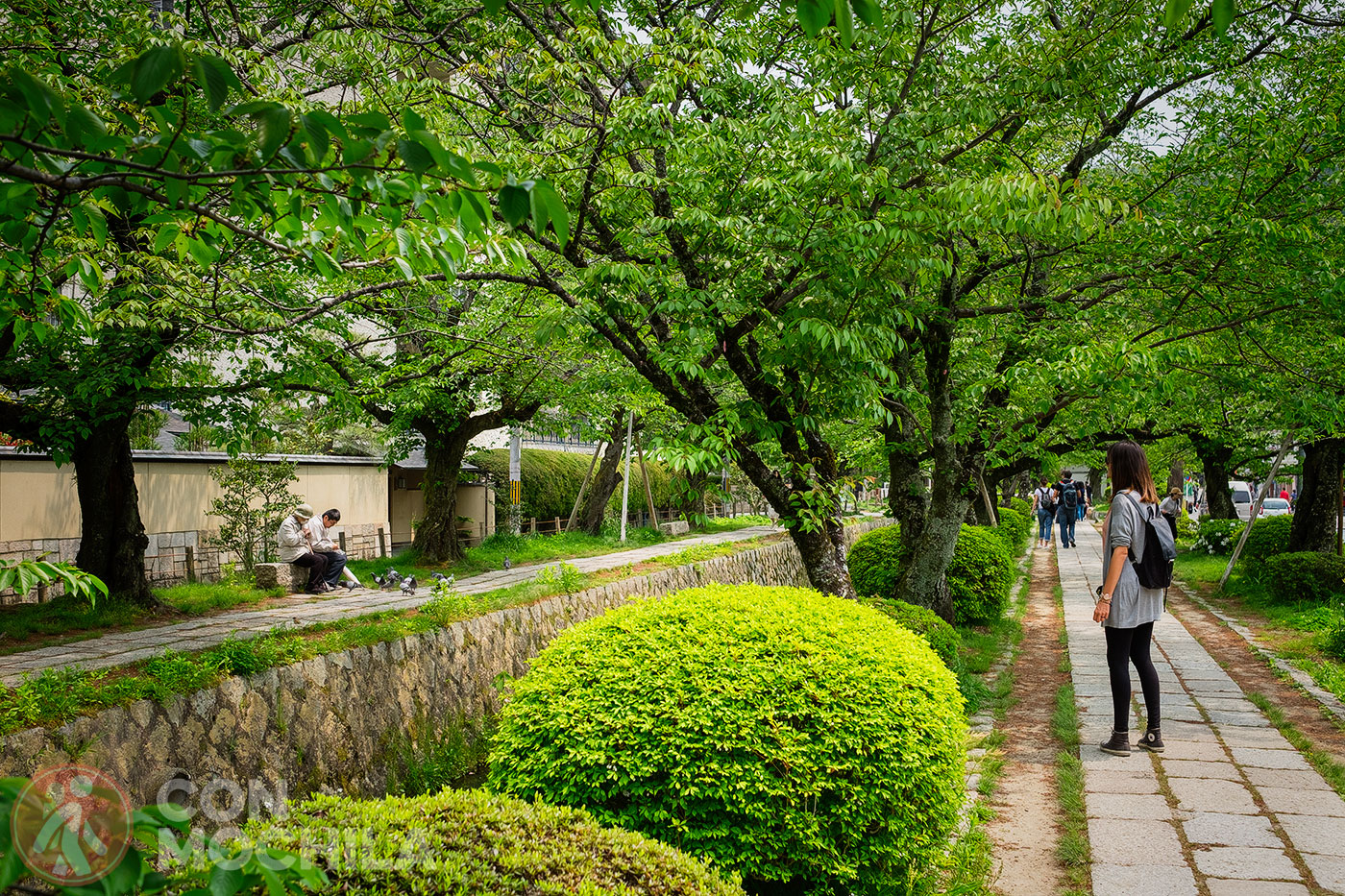
At the beginning of May, when we were there, there were still some flowers on the trees, but nothing like what we had seen in the photos. With or without flowers, the place is really worth a visit, so definitely put it on your list of things to see.
Built in 778, Kiyomizudera Temple offers unbeatable views of the city. Also known as the water temple because it is located at the Otawa waterfall, this temple complex is so well known that visitors come by the hundreds.
However, this UNESCO World Heritage Site disappointed us as ongoing renovations and scaffolding covering some buildings overshadowed the beauty of the place.
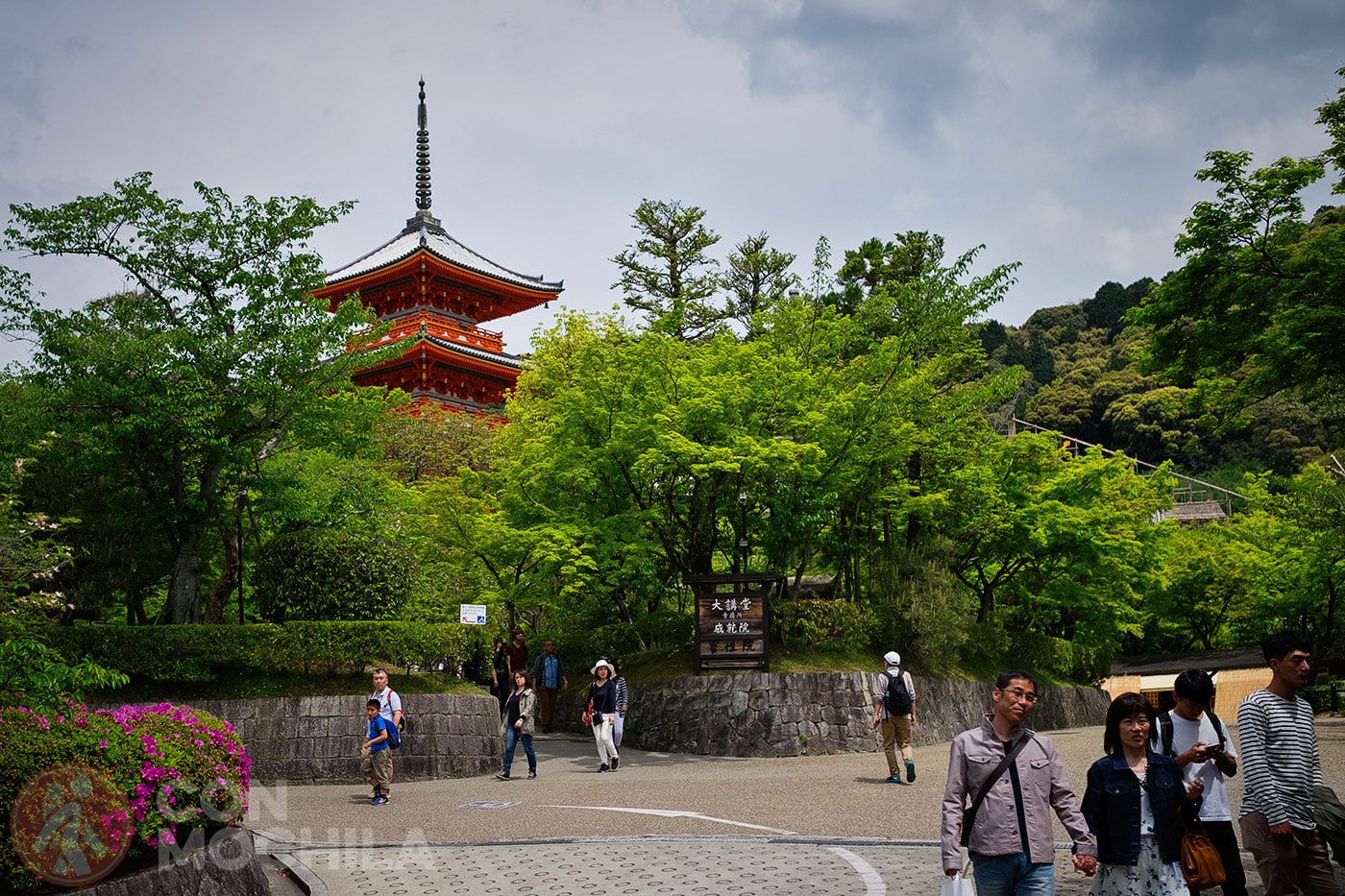
Among the most notable buildings and structures in the complex are the main hall or Hondo (with the enormous wooden terrace with the viewing platform), the Jishu shrine, the Niōmon gate, and the waterfall itself.
There are dozens of souvenir shops and restaurants on the pedestrian street leading to the complex, and there are almost as many people there as there are in the temples.
This bamboo forest in Arashiyama, west of Kyoto, can be a bit deceiving. In photos flooding social media, it often appears much larger than it actually is, giving the impression that there is no one else there.
But the truth is that this forest looks more like a plantation and the path is usually full of people. Still, it is very interesting to see such a large concentration of these very tall plants, so do not rule out a visit.
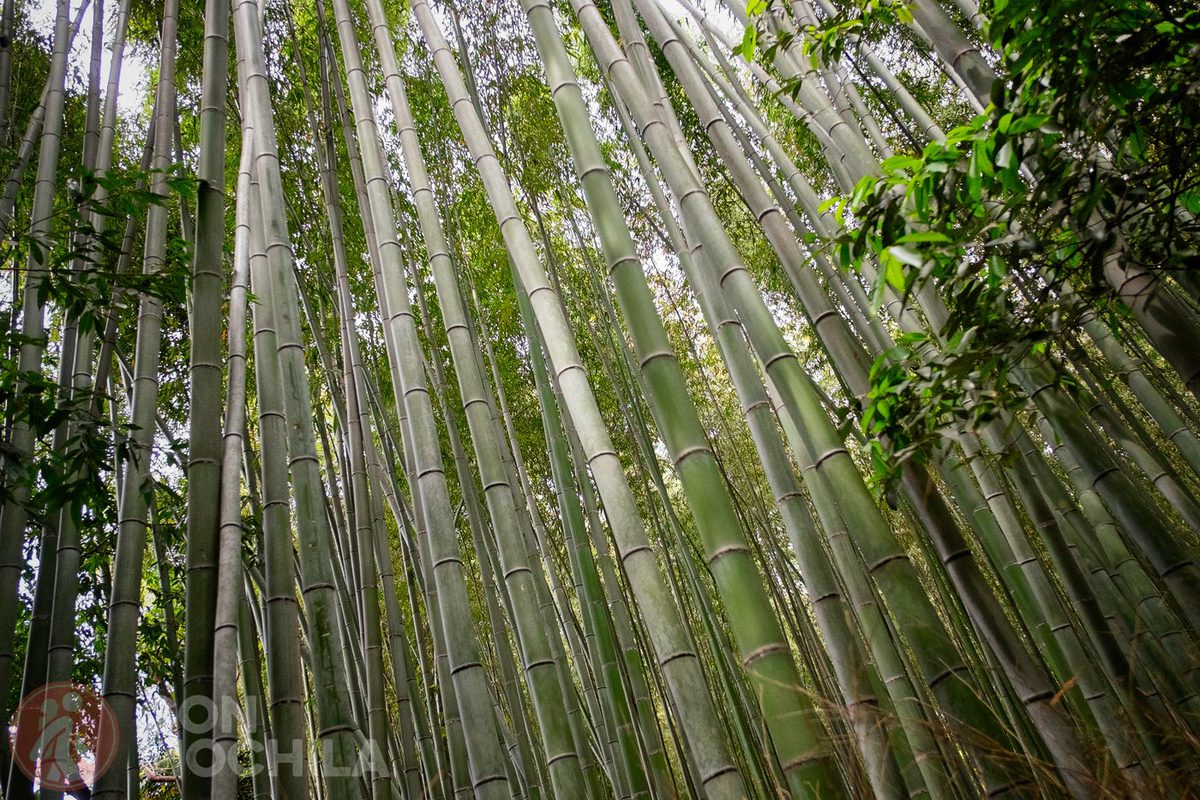
In addition, once in Arashiyama you can take advantage of the opportunity to visit many other things in the area: walk through Kameyama Park, visit the Okochi Sanso villa, the Tenryu-ji, Jōjakkō-ji, Nison-in temples or the Nanomiya shrine. However, at least during the Japanese holiday season, it is usually packed with tourists. We recommend a couple of tours to visit this area:
South of Kyoto, not far from the famous Fushimi Inari shrine, lies the charming village of Uji. A corner with a lot of history and a special charm, as only found in this part of Japan.
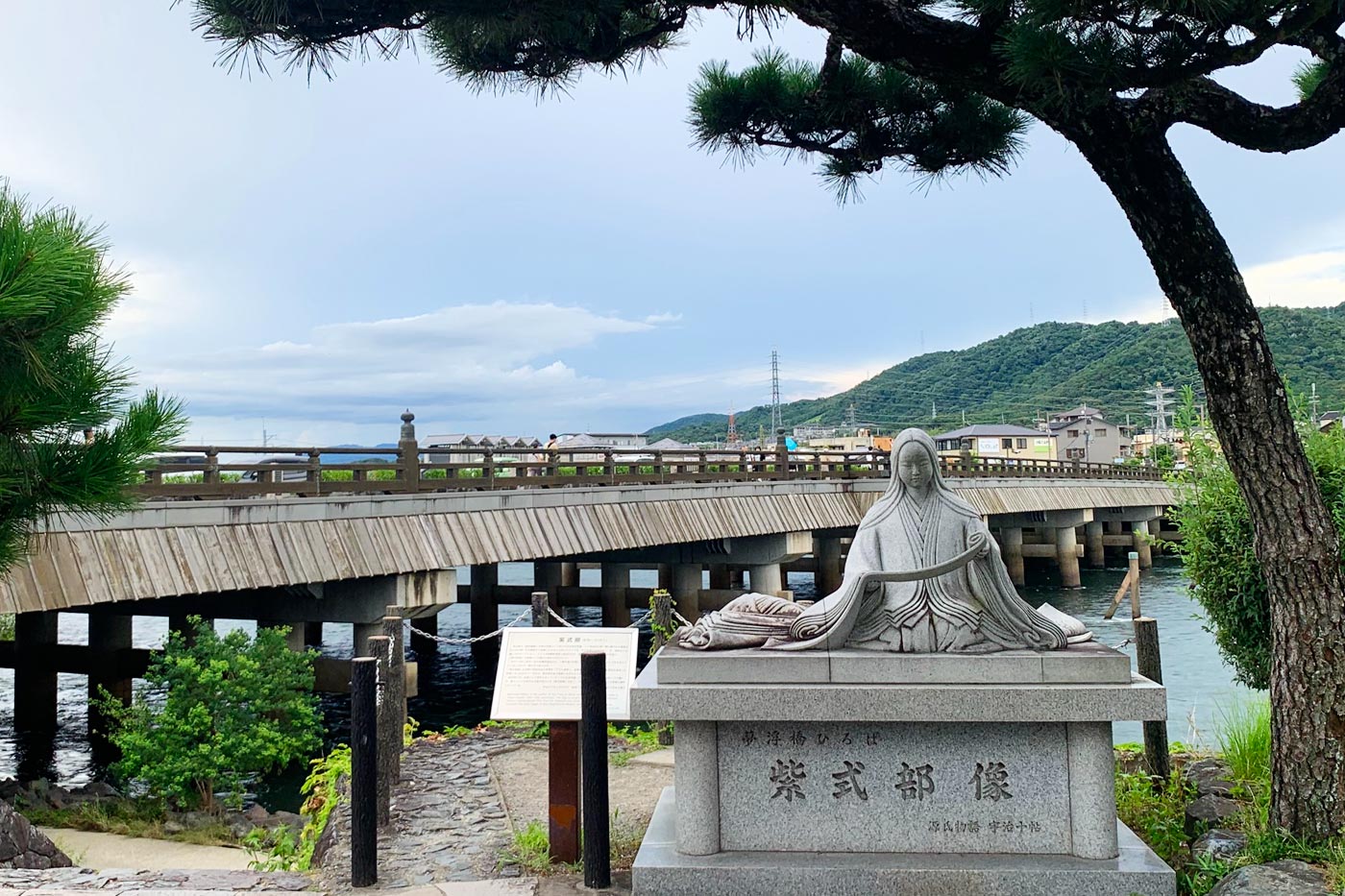
Temples of exceptional beauty, picturesque views, riverside walks, nature, culture, tradition… And, in addition, lots of green tea, since Uji is the homeland of the famous matcha tea.
Founded in 853, the Eikando Zenrin-ji temple houses the Mikaeri Amid, a characteristic wooden Buddha that has its head looking backwards. Another peculiarity of this temple is that, unlike other places in Japan that are more beautiful in spring when the almond trees are in bloom, here the ideal season is autumn, when the maple trees adorn the garden with shades of brown and yellow.

About a ten-minute walk from Kyoto station is the Higashi Hongan-ji Temple (Eastern Temple of the Original Vow). Its main hall, the Goeido, is the largest wooden structure in Kyoto (and second largest in Japan) and is dedicated to Shinran, the founder of the sect.
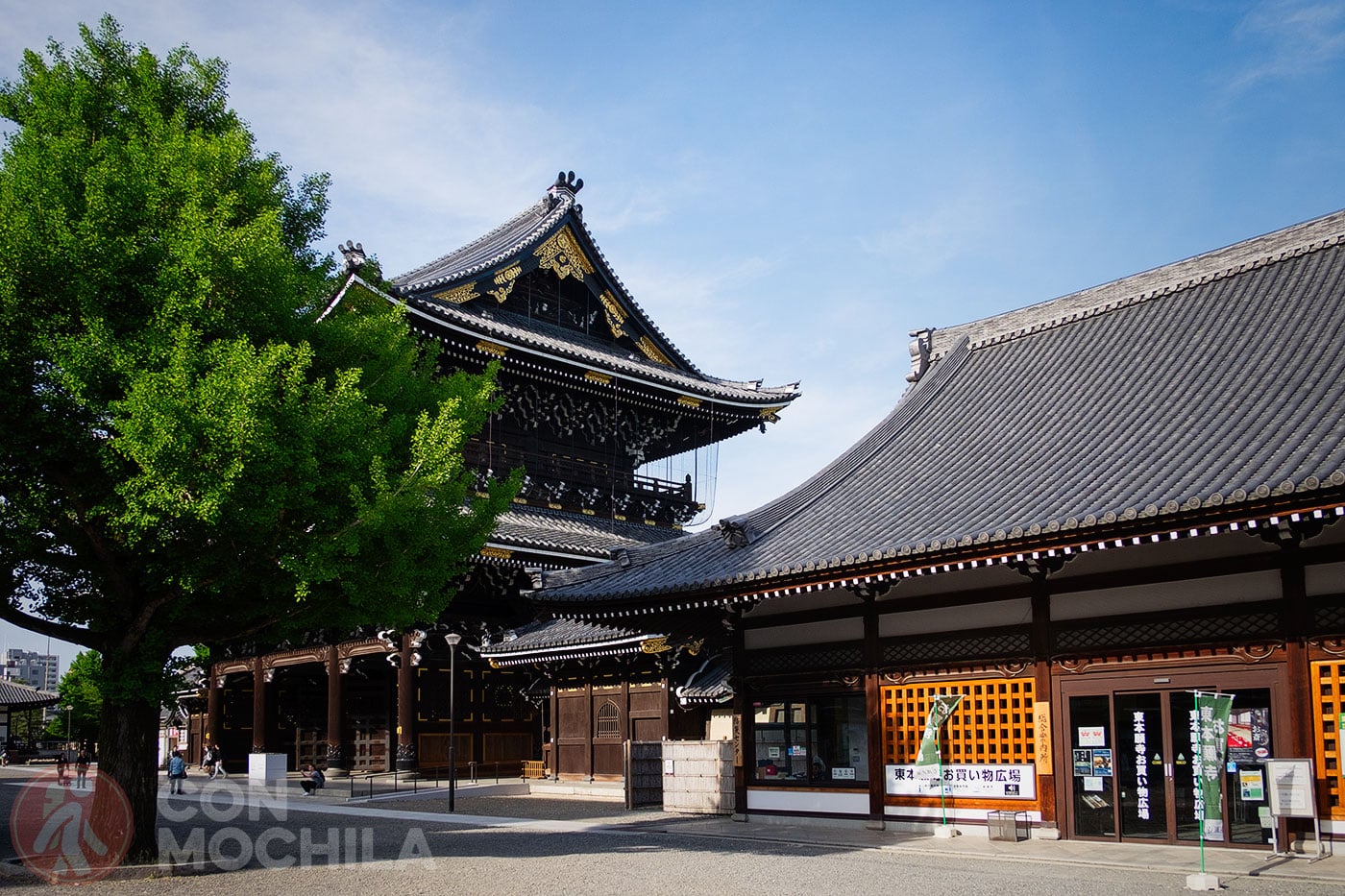
Once here you can consider visiting the Nishi Hongan-ji temple, a few blocks from the first one.
Kennin-ji is a historic Zen Buddhist temple considered one of the so-called Kyoto Gozan or “the five major Zen temples of Kyoto.” Among the buildings in the complex are the Abbot’s Quarters, a tea house, and the Imperial Messenger Gate.
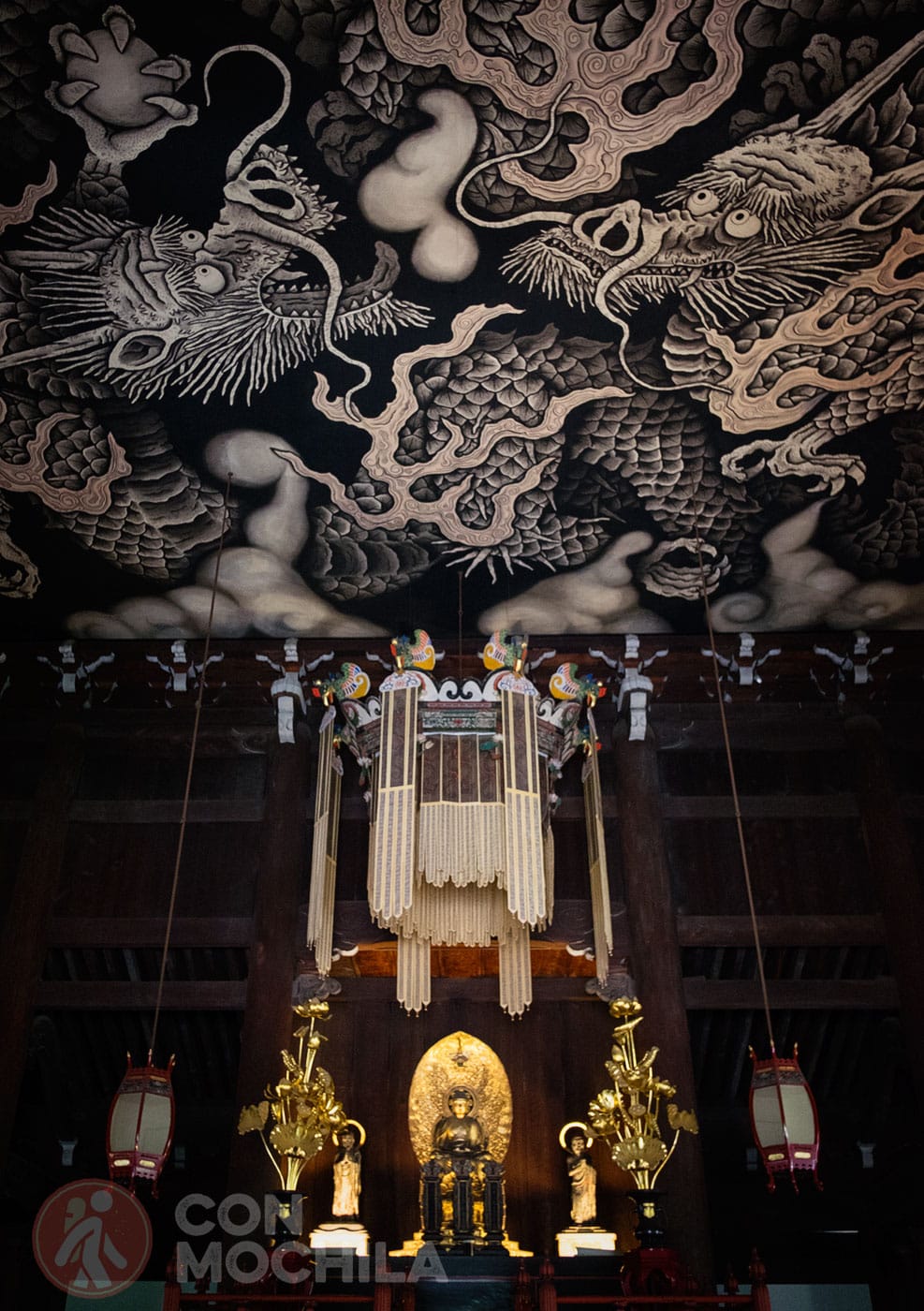
But the most impressive feature is the mural on the ceiling of one of the rooms, with two giant dragons painted in 2002 by Koizumi Junsaku to commemorate the 800th anniversary of the temple.
Honen-in is a small temple located very close to the Philosopher’s Walk, on a parallel street. The best thing about this place is that, as it is a bit hidden, fewer people come to it than to some of its neighboring temples, giving it an atmosphere and tranquility that is appreciated.
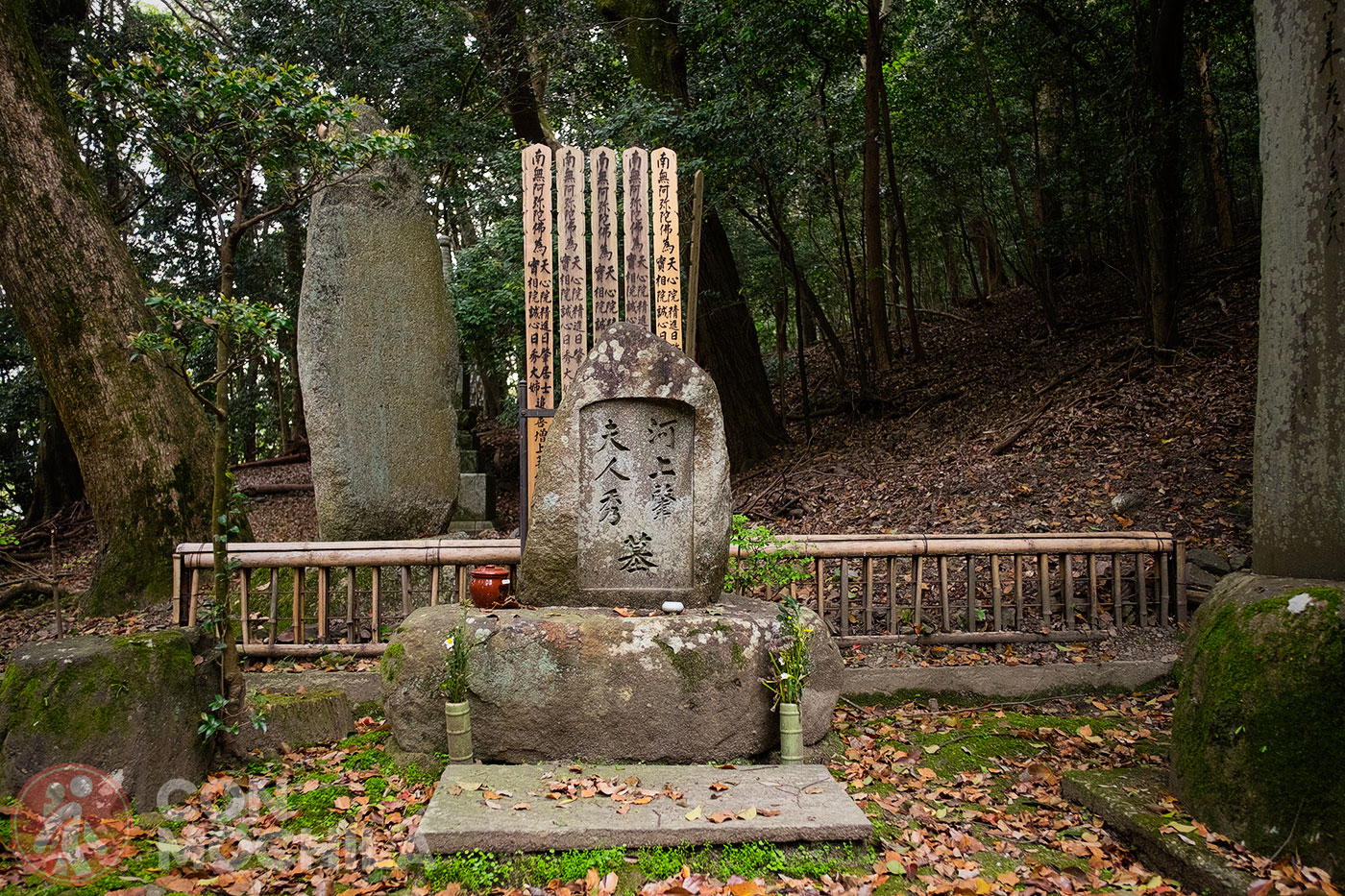
It is dedicated to the monk Honen, founder of the place and of the Jodo-shu Buddhist school.
Pontochō is a geisha district full of tea houses and restaurants. It is actually a small pedestrian street where many tourists stroll, and is especially beautiful at night when it is illuminated by lanterns.
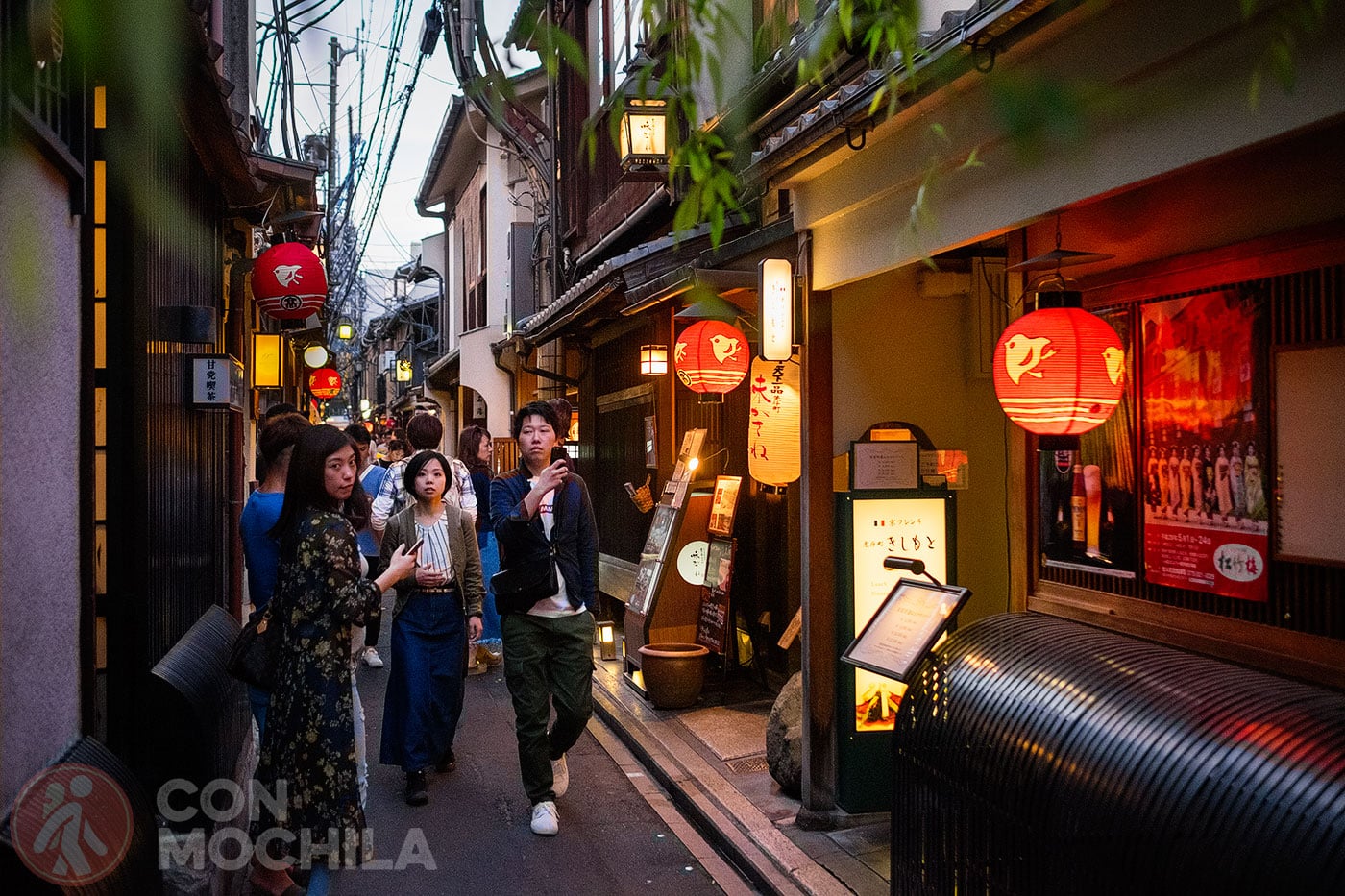
The Katsura and Kamo rivers run through Kyoto from north to south, bringing fresh air and a place to feel like you’re escaping the city.
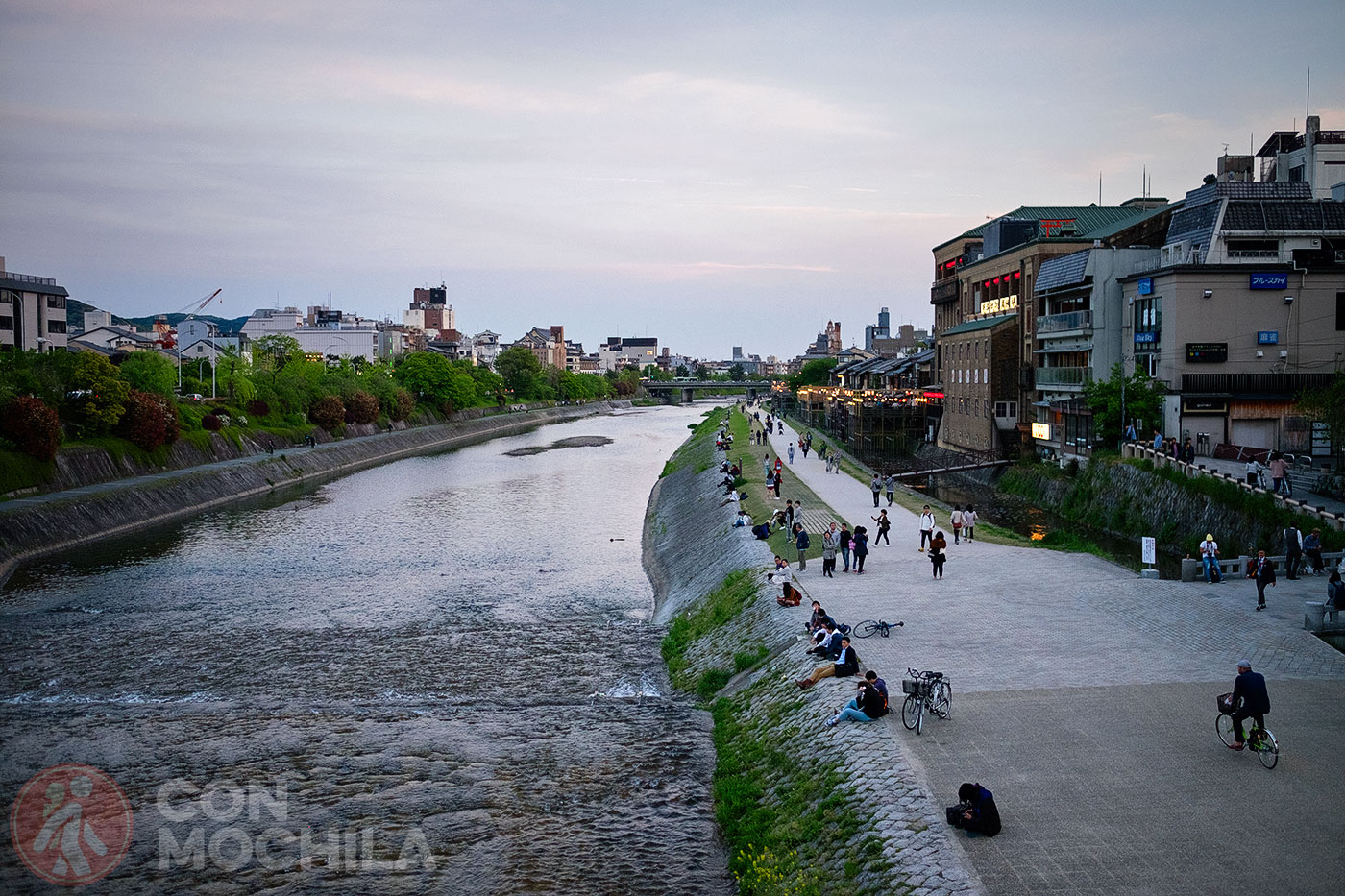
Their banks are the ideal place for a stroll or a picnic or to relax between visits.
Yasui Konpira-gu is a curious Shintō shrine located in Gion, where there is a stone filled with papers and a hole in the bottom. If you want to end a bad relationship and start a new one, you have to crawl through it as if it were a tunnel.
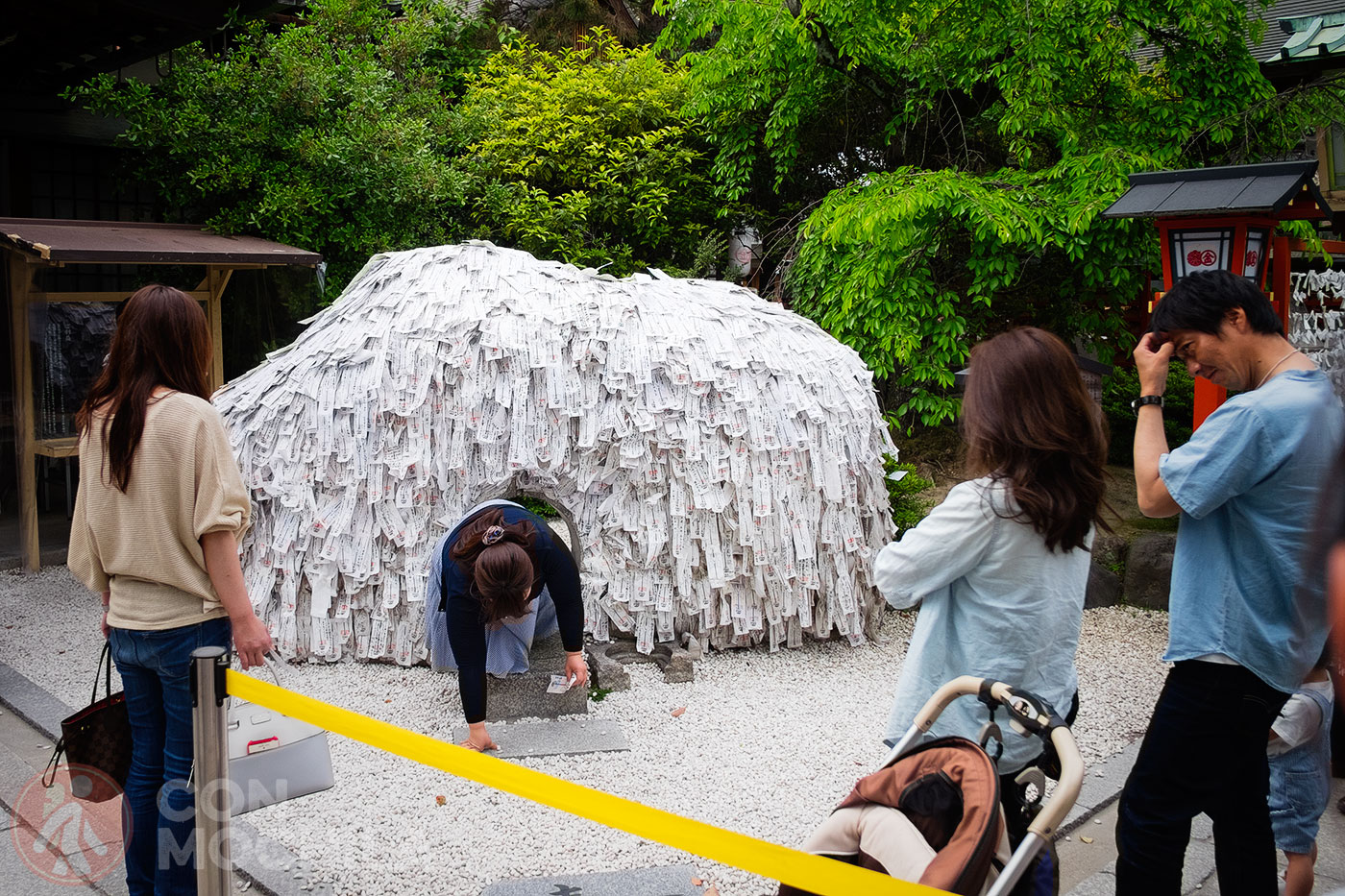
If you are traveling through Japan, sooner or later you will pass through Kyoto Station, a transit point to catch a train or a bus, always bustling and full of restaurants with all kinds of food, so if you are hungry do not hesitate to take a walk there.
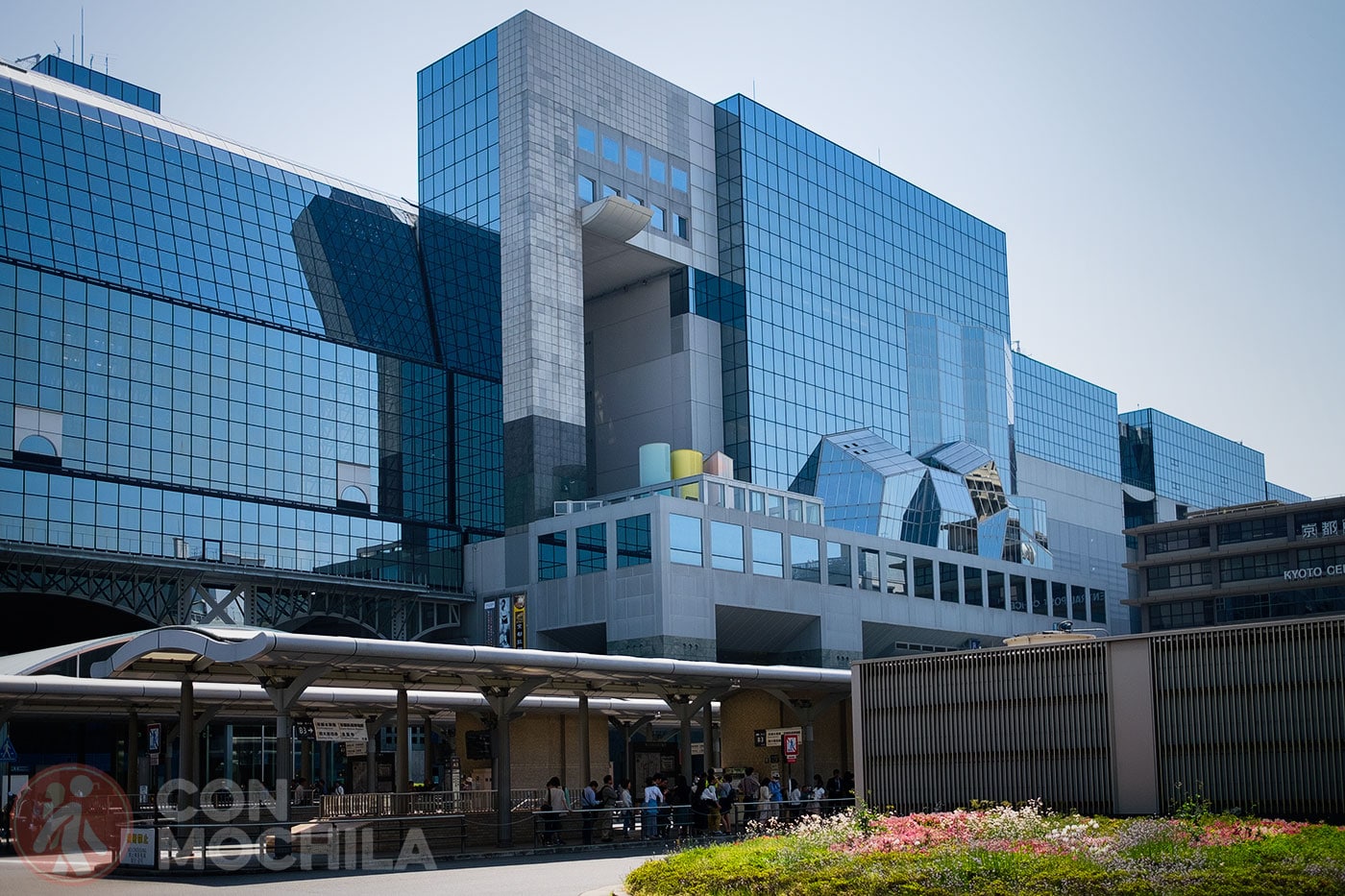
With this guided tour of Kyoto, you can spend a full day exploring some of the monuments that are World Heritage Sites, such as Nijo Castle, which suffered a fire in 1788, Ginkaku-Ji, or the Higashima district. If you are going in a group, you may want to take a private tour of Kyoto with a local guide, visiting some of the wonders of this city.
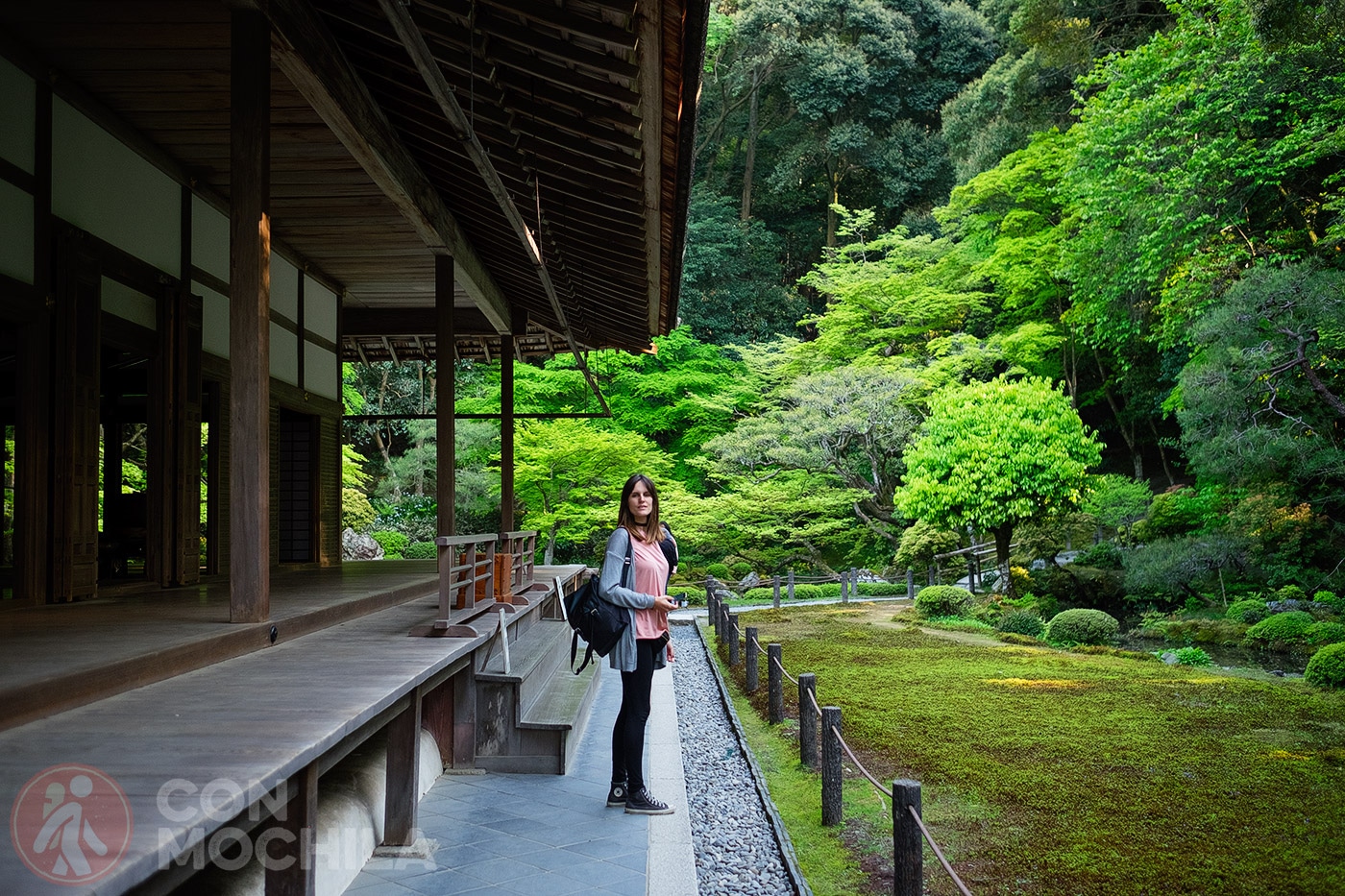
The Nishiki Market Food Tour starts at Nishiki Tenmangu, a historic Shinto shrine. After a walk, you will reach the market with more than 400 years of history, where you can taste different dishes of delicious Japanese food.
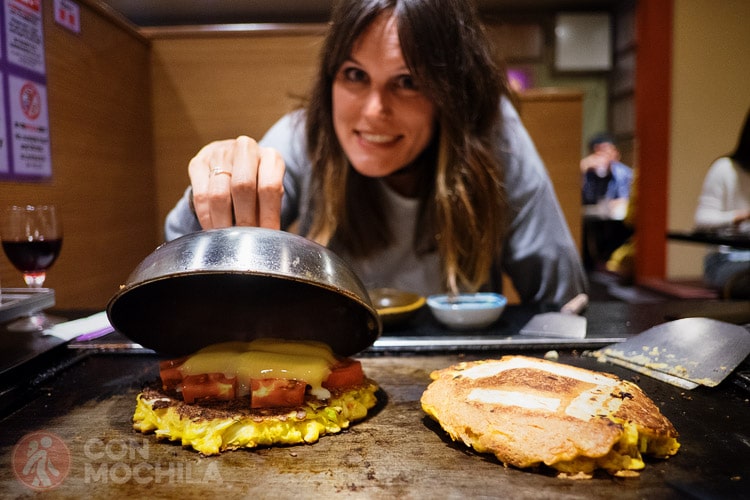
Another option is to take a food tour of Kyoto, not just focused on one market.
With this private tour to Nara and Inari, you will visit the Shinto shrine dedicated to the deity Inari and its red toris that mark the path up the hill.
Afterwards, you will visit Nara, the first capital of the Japanese empire, where you will see some of its most famous temples such as Todaiji, which is considered the largest wooden structure in the world, as well as seeing its well-known deer in Nara Park. You will journey to Kyoto on the train with the guide.
In Kyoto we decided to use Airbnb to stay. We stayed in the university area because it was cheaper and it is full of places to eat that are not too expensive.
We stayed at Kyodai-side house, a peculiar traditional house owned by a very friendly couple where we had a room and shared the bathroom with other guests.
For more options, you can also check out what we think are the best accommodations in Kyoto. Here are our recommendations:
If you are short on time, it is best to organize your visit at least a bit. Kyoto is a very large city with several areas and getting around it, although easy, takes time. You will get more done if you have planned your route based on the things you want to see.
The most touristic areas and those with the most concentrated points of interest are the following:
This is the eastern part and is home to a large number of temples. Guidebooks usually divide it into two: to the north is the Philosopher’s Walk and the Eikan-do and Ginkaku-ji temples, and to the south is Kiyomizu-dera.
Both parts are easy to explore on a long walk, but each of these areas can take more than half a day to visit, taking into account that there are many other temples inside them and you will want to stop to eat or rest, of course.
The famous Fushimi-Inari is located in this area.
The bamboo forest area is to the west and it should be noted that it can take about an hour to get there by train or metro if you are staying in the east.
This area is home to Ponto-chō Street and the shopping avenues, where all the shops are located.
These are the areas with the most points of interest and therefore the most tourists, but remember that the entire city of Kyoto is dotted with temples and museums. The positive side is that it is extremely easy to get to all the places by public transport.
Public transport in Japan is generally comprehensive and efficient, and Kyoto is no exception. To see the city’s main tourist attractions, you have to travel a lot, but the good news is that it’s easy and there are plenty of options. Here are a few:
An extensive network of train and subway lines covers most of Kyoto. It takes a little getting used to the ticket machines and the way of calculating the price per journey, but there are maps in English at all stations and very friendly people who, with varying levels of English, are willing to help you at any time.
If you are one of those who prefer traveling above ground, don’t miss any detail of the city of Kyoto and travel by bus.
Renting a bike is a good option for exploring a specific area.
Unless you’ve gone out to dinner and are returning to your accommodation very late, it’s difficult to find a bus or the metro stations that are closed, so it’s very unlikely that you’ll need to use apps like Uber or Grab. As you’ve seen, public transport covers almost the entire city, so make the most of it!
Click on the image and it will take you to a new Google Maps window with all the points of interest to travel around Kyoto.